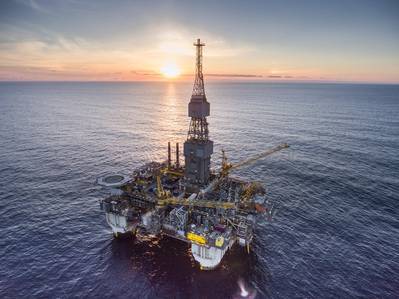In a post on its website, Statoil said it expects substantial changes in the global energy mix. In moving toward a low-carbon energy system, new renewables may increase from just over one percent of total primary energy demand in 2014 to almost 20 percent in 2050, the company said. In a scenario that is consistent with the 2-degree target, oil reduces its share from 31 to 23 percent, while gas remains at around 20 percent.
“We believe it is possible to realize energy emission reductions consistent with the 2-degree target, but it will require immediate and coordinated global action. We should not underestimate the needed transformation, both in terms of energy efficiency improvements, fuel mix changes and modified consumer behavior. Unfortunately, many factors today work against such a transformation,” said Chief economist in Statoil, Eirik Wærness.
Today Statoil published the 7th edition of its Energy Perspectives report, describing three different scenarios for global macroeconomic development, energy demand, energy mix, and energy-related greenhouse gas emissions. For the first time the forecast period is extended to 2050.
Recognizing the uncertainties of predicting future energy markets, the report contains three different scenarios about the future, building on different sets of assumptions:
- Reform: The starting point is the national climate commitments of the Paris agreement (COP21). It gradually puts more weight on market-driven developments in global energy markets, with policies playing a supportive role.
- Renewal: An ambitious and very challenging back-casted scenario delivering a trajectory for energy-related emissions consistent with the 2-degree target.
- Rivalry: A future which is impacted by geopolitical and economic conflict and larger differences between regions, both with regards to economic development and transformation of the energy systems.
The main development trends in all scenarios are that the global population is growing, more people are becoming part of the global middle class, economic growth is continuing, and hence the underlying global demand for products, services and activities that require energy is increasing.
A possible route to large emission reductions
Renewal is the scenario that describes a possible route toward energy-related emissions consistent with a 2-degree target. This, according to Statoil, will require unprecedented global cooperation on policies and regulations, and on technology development related to energy supply and demand. As an example, average annual improvement in energy efficiency, measured by the global energy intensity, must be three times higher than what we have experienced the last 25 years.
Continuing global greenhouse gas emissions at today’s levels is not sustainable, Statoil said.
“Failing to transform the world’s energy systems will have negative effects across the globe and for all parts of society. We support a development where the world moves in a sustainable direction where climate change targets are met along with other important sustainable development goals as set out by the UN,” said Statoil’s CEO Eldar Sætre.
Global oil demand
Oil demand is expected to increase into the 2020s. Dependent on scenario, oil demand in 2050 ranges from below 65 to above 120 million barrels per day, compared to around 97 today.
Regardless of scenario, and in addition to massive investments in renewable energy, we will continue to need large investments in oil and gas due to natural decline in supply from existing fields. In the Renewal scenario, oil supply in 2050 from new reserves not currently in production, will correspond to 15-25 times the current production of Norway.
“Electric cars and plug-in-hybrids could account for around 90 percent of private cars in 2050, and efficiency will be much higher than today. Still, with heavy duty and maritime transport, aviation and petrochemical industry growth, oil demand will be above 60 million barrels per day,” Wærness said.
Statoil’s strategy
Statoil said it will actively shape its business to deliver high value with a low carbon footprint.
“Statoil supports the Paris agreement. We believe that being able to produce oil and gas with lower emissions, while also growing in profitable renewables, will give competitive advantages and provide attractive business opportunities in the transition to a low carbon economy,” Sætre said.
Statoil added it will gradually build a material position in profitable renewable energy projects and low-carbon solutions. The company has a strategic ambition to allocate 15-20 percent of its annual investments towards these new energy solutions in 2030. A low carbon footprint from operations will increasingly be a competitive advantage, and as a part of Statoil’s strategy, the climate roadmap sets a clear ambition in being a leading company in carbon-efficient oil and gas production.





